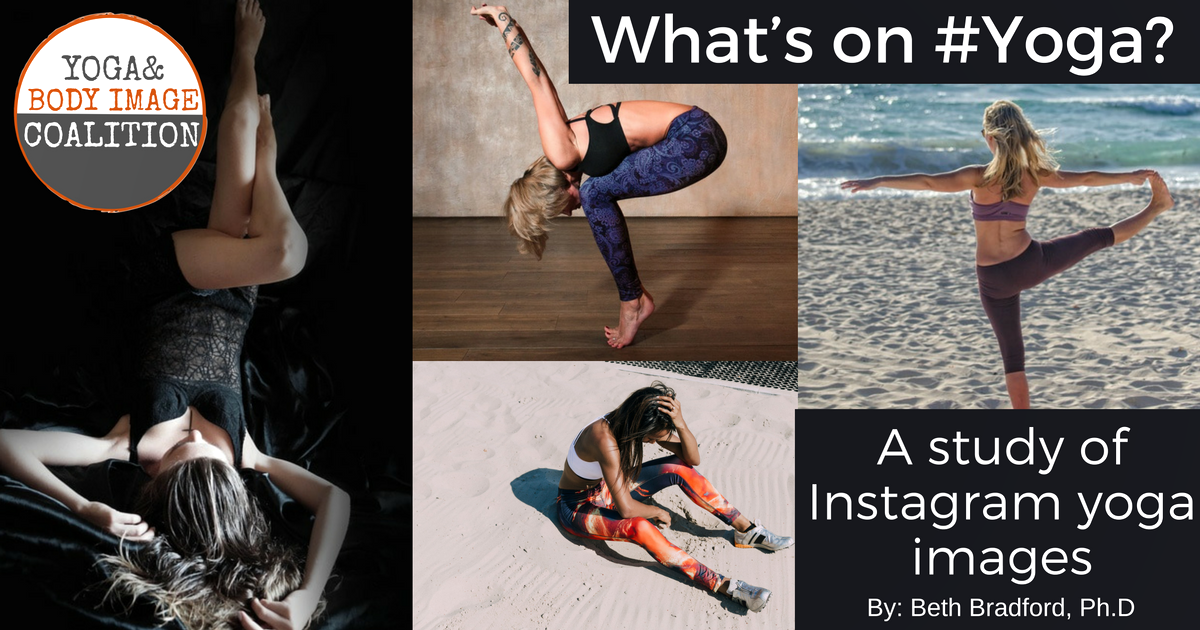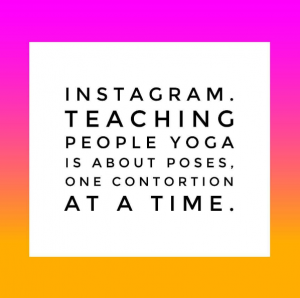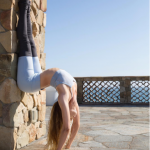What’s on #Yoga?
October 18, 2016
The following post was written by Beth Bradford for the Yoga and Body Image Coalition.

In August, Tara Stiles posted a meme on Instagram that read: “Instagram. Teaching people yoga is about poses, one contortion at a time.” However, her caption offered her criticism: “People are STILL (all caps original) intimidated by yoga because it has a reputation for needing to be crazy flexible or contorted.” A Yoga in America study conducted by Yoga Alliance and Yoga Journal found that some people have never tried yoga because they believe it’s too challenging or their body type isn’t right for it. Could the images we’re posting—and propagating—on Instagram be contributing to this reputation?
This was the focus on my recent content analysis on the nature of images of Instagram. My student and I studied more than 400 images from September 2015-April 2016, looking at the relevance of the image to yoga, the types of pictures (i.e. person, animal, meme), the body sizes, and the complexity of the poses. Here is what I found:
- Many images are not even relevant to yoga. Open up a new window on your browser and navigate to #yoga on Instagram. What do you see? As I write this, of the nine “Top Posts,” only one is relevant to yoga. In my analysis, just over half of the images studied pertained to yoga, such as asana or meditation. Less than 20 percent of images were “somewhat relevant,” meaning that it promoted vegetarian eating or natural lifestyle. More than a quarter of the images were not relevant to yoga. Many of these images promoted gymnastics routines or people working out at a gym.
- People are the main focus. Almost three-fourths of the images coded showed a person (or several people). Other images showed yoga-themed memes, advertisements to yoga classes and workshops, or beautiful landscapes (perhaps to promote santosha?).
- Thinner bodies are prevalent, especially in the Top Posts. Body size was measured using a 9-point scale, with 1 being “very skinny” and 9 being “obese”. “Average” bodies were coded 5. We found that the average female was 3.5, and the male was 4.16. When looking a little more closely at the images, we tracked whether or not they were listed as “Top Posts” or not. In the Top Posts, the females were 3.02 on the 9-point scale, and males were 4.0. The difference between the female bodies in the Top Post images were significantly smaller than the “recent post” images (4.23, which approaches “average”). We also found the same results with Instagram accounts with more than 5,000 followers.
- More complex poses are found on Top Posts and accounts with a lot of followers. We rated complexity of poses on a 4-point scale, with 1=beginner, 2=intermediate (a student could do this pose after a year of regular practice, 3=complex (the pose takes more than a year of regular practice to master), and 4=contortion (the pose is available to very advanced students). We found that the yoga poses on Top Posts (2.22) and accounts with heavy followers (2.21) showed significantly more complex poses (averaged 2.22 and 2.21, respectively) than recent posts (1.50) and accounts with less than 5,000 followers (1.51).
What does all this mean? In terms of relevance to yoga, there were many Instagram aggregates that posted photos pertaining to gymnastics or working out at a gym, which emphasize a physical practice. Even though these images are not relevant to yoga, seeing them in the context of yoga images blends these images into a person’s mental model of yoga. Because Instagram is a visual medium, it’s not surprising that most images on #yoga show people. It’s probably hard to make the connection of a taco to yoga (although the dairy-free cheese on this taco is good for paleo, which is good for…yoga??), so promoting images of people is probably more applicable to yoga, especially if someone doesn’t read the photo’s caption.

What is particularly important is that the images in top posts and accounts with heavy following tend to show a thinner ideal and a more complex yoga pose.
This could probably explain why people believe they don’t have the right body type for yoga or they don’t see themselves being able to do the more complex poses. The question is—do we “like” or “follow” these images and accounts on social media because they show an ideal, giving us motivation to practice? Or do these accounts only post stylized, filtered images in order to attract more attention, giving us the impression that this is the norm?
Perhaps it’s up to us to not only be aware of what we’re endorsing on social media, but being more critical about how these images can be internalized.

 Short Bio:
Short Bio: